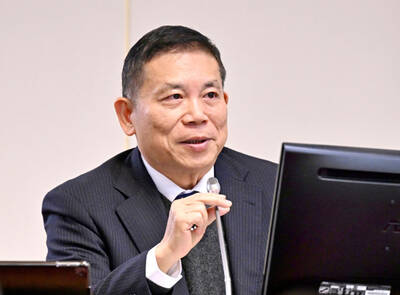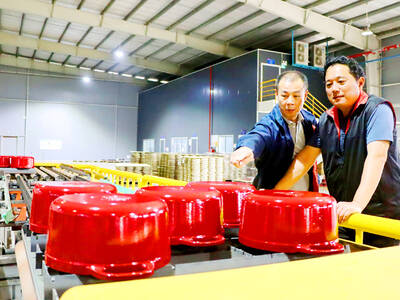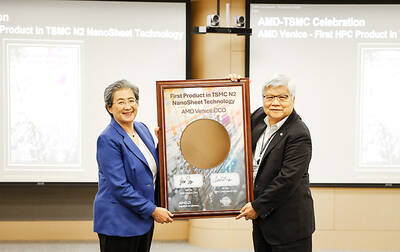California is by far the US’ most populous state, as well as its largest agricultural producer. Increasingly, it is also one of the country’s most parched places.
However, Edgar Terry, a fourth-generation farmer in Ventura County, just outside of Los Angeles, thinks that he has a key to reversing worsening water stress: establishing tradeable rights to shares of fast-depleting groundwater aquifers.
Doing so would turn aquifer water into a more valuable asset that could be traded on a market, similar to “cap-and-trade” systems that have been set up to regulate air pollution, conserve fisheries and manage other common resources.
Such a system would put a price on what has essentially been a free resource and create a powerful incentive to use it more sparingly, backers have said.
“If you can buy and sell stocks, why not trade water? It’s an asset, we can’t live without it and I can’t grow without it,” Terry told the Thomson Reuters Foundation by telephone. “When you assign something a value, you tend to take care of it much more.”
A local initiative spurred by Terry’s idea — the Fox Canyon groundwater market — is to become the first such system created under landmark state water legislation passed in 2014. It is set to start formally trading next month.
At first the market would be open only to farmers within a single groundwater basin, but eventually it could extend to towns and cities and throughout the three areas that drain into the Fox Canyon aquifer.
Under the market, participants would receive long-term shares to draw from the aquifer based on previous pumping needs and monitored by cutting-edge meters that gauge their use in almost real time.
US water regulations have long focused almost exclusively on surface water — rivers, streams and lakes — rather than groundwater.
Out of view, groundwater has tended to flow under the public radar as well, water experts said.
However, as pressures on water supplies from climate change and rapid urbanization grow, along with data showing that groundwater aquifers are quickly being depleted across the globe, that has begun to change.
The Fox Canyon project is the tip of a burgeoning public discussion in California, after the state in 2014 mandated that water districts be sustainable by 2040.
Initial plans to ensure that sustainability are due by next month.
Previously, the state was one of the most unregulated in the parched US west on groundwater, University of Nebraska associate professor of agricultural economics Karina Schoengold said.
While water markets are just one potential strategy for conservation, they are receiving major interest across the state — and that in turn is drawing attention nationally, she said.
“It’s a big change that could really drive changes in how we think about managing groundwater,” Schoengold said.
Effective groundwater markets are complicated to set up and Schoengold estimated that fewer than 10 “true” systems exist in the US or abroad.
However, technological advances and other changes mean they are increasingly feasible and “are going to becoming really important in the future,” she said.
One primary obstacle remains skepticism of the fairness of such systems, particularly among agricultural producers keen not to allow outside control over their ability to grow a crop.
“We have to show that this is something that has benefits for the people who are using groundwater, and we’re not at that point everywhere,” she said.
Economists feel they now have new evidence for one important benefit — higher land values.
In a working paper published in September, economists with the University of California’s Bren School of Environmental Science and Management found that establishing groundwater markets appears to have a major positive effect on property values.
Three researchers looked at a groundwater market set up in the 1990s in the state’s Mojave Desert, one of the driest places on the continent and, with its intensive agriculture, “a poster child of inefficient water use,” coauthor Kyle Meng said.
By 1980, one-fifth of the area’s aquifer had been depleted, the paper said.
In the following decade, courts introduced an early version of a water trading market in which users could trade pumping rights on a yearly basis, although without the formal, anonymous exchange of the Fox Canyon project.
“Not only did the water table stabilize, but it had enormous benefits in terms of land value,” Meng said.
Land values were 280 percent higher inside the area with groundwater property rights than outside, the study found.
Meng and his coauthors said that is important, because the value of agricultural land will go down if water rights are restricted — but it appears that can be offset as farmers sell water they are not using to other farmers or even thirsty cities.
The Fox Canyon project might prove to be a model for California — and beyond.
In the 1980s, the area was designated a special agricultural zone, prompting the creation of a groundwater management agency, California Lutheran University Center for Economic Research and Forecasting executive director Matthew Fienup said.
Later, water metering and an allocation system were set up, he said.
Today, Ventura County has some of the most expensive agricultural land in the country — all of it overwhelmingly dependent on groundwater, particularly during the droughts the state has increasingly struggled with, Fienup said.

UNCERTAINTY: Innolux activated a stringent supply chain management mechanism, as it did during the COVID-19 pandemic, to ensure optimal inventory levels for customers Flat-panel display makers AUO Corp (友達) and Innolux Corp (群創) yesterday said that about 12 to 20 percent of their display business is at risk of potential US tariffs and that they would relocate production or shipment destinations to mitigate the levies’ effects. US tariffs would have a direct impact of US$200 million on AUO’s revenue, company chairman Paul Peng (彭雙浪) told reporters on the sidelines of the Touch Taiwan trade show in Taipei yesterday. That would make up about 12 percent of the company’s overall revenue. To cope with the tariff uncertainty, AUO plans to allocate its production to manufacturing facilities in

Taiwan will prioritize the development of silicon photonics by taking advantage of its strength in the semiconductor industry to build another shield to protect the local economy, National Development Council (NDC) Minister Paul Liu (劉鏡清) said yesterday. Speaking at a meeting of the legislature’s Economics Committee, Liu said Taiwan already has the artificial intelligence (AI) industry as a shield, after the semiconductor industry, to safeguard the country, and is looking at new unique fields to build more economic shields. While Taiwan will further strengthen its existing shields, over the longer term, the country is determined to focus on such potential segments as

TAKING STOCK: A Taiwanese cookware firm in Vietnam urged customers to assess inventory or place orders early so shipments can reach the US while tariffs are paused Taiwanese businesses in Vietnam are exploring alternatives after the White House imposed a 46 percent import duty on Vietnamese goods, following US President Donald Trump’s announcement of “reciprocal” tariffs on the US’ trading partners. Lo Shih-liang (羅世良), chairman of Brico Industry Co (裕茂工業), a Taiwanese company that manufactures cast iron cookware and stove components in Vietnam, said that more than 40 percent of his business was tied to the US market, describing the constant US policy shifts as an emotional roller coaster. “I work during the day and stay up all night watching the news. I’ve been following US news until 3am

COLLABORATION: Given Taiwan’s key position in global supply chains, the US firm is discussing strategies with local partners and clients to deal with global uncertainties Advanced Micro Devices Inc (AMD) yesterday said it is meeting with local ecosystem partners, including Taiwan Semiconductor Manufacturing Co (TSMC, 台積電), to discuss strategies, including long-term manufacturing, to navigate uncertainties such as US tariffs, as Taiwan occupies an important position in global supply chains. AMD chief executive officer Lisa Su (蘇姿丰) told reporters that Taiwan is an important part of the chip designer’s ecosystem and she is discussing with partners and customers in Taiwan to forge strong collaborations on different areas during this critical period. AMD has just become the first artificial-intelligence (AI) server chip customer of TSMC to utilize its advanced